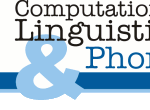|
|
Methoden der Psycho- und Neurolinguistik: 'Speech Disfluencies' (2019/2020)
Semesterplan
| 17.10 |
|
Organisatorisches
und Ueberblick |
|
| 24.10 |
|
RAILS Conference (kein Seminar-aber zur Konferenz kommen) |
|
|
| 31.10 |
|
Grundlagen des
wissenschaftlichen Arbeitens am Beispiel Disfluency (Wie finde ich ein Thema und wie finde ich Literatur?) I
|
| 07.11 |
|
Grundlagen des
wissenschaftlichen Arbeitens am Beispiel Disfluency (Wie finde ich ein Thema? Wie finde ich Literatur? Wie lese ich meine Literatur?) II
|
| 14.11 |
|
'Frühe Beschreibungen' I
- Schachter, S., Christenfeld, N., Ravina, B., and Bilous, F.(1991). Speech disfluency and the structure of knowledge. Journal of Personality and Social Psychology, 60(3), 362-367. https://doi.org/10.1037/0022-3514.60.3.362
- Fox Tree, J. E. (1995). The Effects of False Starts and Repetitions on the Processing of Subsequent Words in Spontaneous Speech. Journal of Memory and Language. https://doi.org/10.1006/jmla.1995.1032
- Fox Tree, J. E. (2001). Listeners' uses of um and uh in speech comprehension. Memory and Cognition, 29(2), 320-326. https://doi.org/10.3758/BF03194926
|
|
| 21.11 |
|
'Frühe Beschreibungen' II
- Schachter, S., Christenfeld, N., Ravina, B., and Bilous, F.(1991). Speech disfluency and the structure of knowledge. Journal of Personality and Social Psychology, 60(3), 362-367. https://doi.org/10.1037/0022-3514.60.3.362
- Fox Tree, J. E. (1995). The Effects of False Starts and Repetitions on the Processing of Subsequent Words in Spontaneous Speech. Journal of Memory and Language. https://doi.org/10.1006/jmla.1995.1032
- Fox Tree, J. E. (2001). Listeners' uses of um and uh in speech comprehension. Memory and Cognition, 29(2), 320-326. https://doi.org/10.3758/BF03194926
|
|
| 28.11 |
|
- Heller, D., Parisien, C., and Stevenson, S. (2016). Perspective-taking behavior as the probabilistic weighing of multiple domains. Cognition, 149, 104-120.
- Arnold, J. E., Fagnano, M., and Tanenhaus, M. K. (2003). Disfluencies signal thee, um, new information. Journal of Psycholinguistic
Research, 32(1), 25-36.
- Arnold, J. E., Kam, C. L. H., and Tanenhaus, M. K. (2007). If
you say thee uh you are describing something hard: the on-line attribution of
disfluency during reference comprehension. Journal of Experimental
Psychology. Learning, Memory, and Cognition, 33(5), 914-930.
https://doi.org/10.1037/0278-7393.33.5.914
|
|
| 05.12 |
|
- Arnold, J. E. (2017). Fluency effects in human language: the integration of automatic and intentional mechanisms of acoustic variation in speech. In S. & Cheney (Ed.), The Social Origins of Language. Princeton University Press.
- Heller, D.,
Arnold, J. E., Klein, N., and Tanenhaus, M. K. (2015). Inferring Difficulty:
Flexibility in the Real-time Processing of Disfluency.Language and Speech,58(2), 190-203. https://doi.org/10.1177/0023830914528107.
|
|
| 12.12 |
|
ERP Grundlagen (Eine kurze Wiederholung/Einfuehrung)
|
|
|
| 19.12 |
|
Anwendungsbeispiele: ERP und Disfluency
- Corley, M., MacGregor, L. J., and Donaldson, D. I. (2007). It's the way that you, er, say it: Hesitations in speech affect language comprehension. Cognition, 105(3), 658-668. https://doi.org/10.1016/j.cognition.2006.10.010
-
Collard, P., Corley, M., and MacGregor, L. J. (2008). Attention orienting effects of hesitations in speech: Evidence from ERP's. Speech 1-25. https://doi.org/10.1017/CBO9781107415324.004
|
|
|
| 09.01 |
|
Anwendungsbeispiele: ERP und Disfluency
- Corley, M., and Stewart, O. W. (2008). Hestitation disfluencies in spontaneous speech: The meaning of \emph{um}. Language and Linguistics Compass, 2(4), 589-602.
-
MacGregor, L. J., Corley, M., and Donaldson, D. I. (2009). Not all disfluencies are are equal: The effects of disfluent repetitions on language comprehension. Brain and Language, 111(1), 36-45. https://doi.org/10.1016/j.bandl.2009.07.003.
-
MacGregor, L. J., Corley, M., and Donaldson, D. I. (2010). Listening to the sound of silence: Disfluent silent pauses in speech have consequences for listeners. Neuropsychologia, 48(14), 3982-3992. https://doi.org/10.1016/j.neuropsychologia.2010.09.024.
|
|
|
| 16.01 |
|
- Engelhardt, P. E., Corley, M., Nigg, J. T., and Ferreira, F. (2010). The role of inhibition in the production of disfluencies. Memory & Cognition, 38(5), 617-628. https://doi.org/10.3758/MC.38.5.617
- Engelhardt, P. E., Ferreira, F., and Nigg, J. T. (2011). Language production strategies and disfluencies in multi-clause network descriptions: A study of adult attention-deficit/hyperactivity disorder. Neuropsychology, 25(4), 442-453. https://doi.org/10.1037/a0022436
- Engelhardt, P. E., McMullon, M. E., and Corley, M. (2019). Individual differences in the production of disfluency: A latent variable analysis of memory ability and verbal intelligence. Quarterly Journal of Experimental Psychology (2006), 72(5), 1084-1101. https://doi.org/10.1177/1747021818778752
|
|
| 23.01 |
|
Native and Non-Native
- Bosker, H. R. (2014). The processing and evaluation of fluency in native and non-native speech, Research Note, 1-18.
-
Bosker, H. R., Quene, H., Sanders, T., and de Jong, N. H. (2014). Native 'um's elicit prediction of low-frequency referents, but non-native 'um's do not. Journal of Memory and Language, 75, 104-116.
- Bosker, H. R., Tjiong, J., Quene, H., Sanders, T. J. M., and De Jong, N. H. (2015). Both native and non-native disfluencies trigger listeners’ attention. Proceedings of Disfluency in Spontaneous Speech 2015, 1-4.
|
|
| 30.01 |
|
Prediction, Repair and some Visual World
- Lowder, M. W., and Ferreira, F. (2016). Prediction in the Processing of Repair Disfluencies : Evidence From the Visual-World Paradigm. Journal of Experimental Psychology: LMC, (FEBRUARY).
- Lowder, M. W., and Ferreira, F. (2016). Prediction in the processing of repair disfluencies. Language, Cognition and Neuroscience, 31(1), 73-79. https://doi.org/10.1080/23273798.2015.1036089
- Loy, J. E., Rohde, H., and Corley, M. (2016). Effects of Disfluency in Online Interpretation of Deception. Cognitive Science, 1-23. https://doi.org/10.1111/cogs.12378
|
|
| 06.02 |
|
Auffangsitzung
|
|
|
|
|
|
|
|

